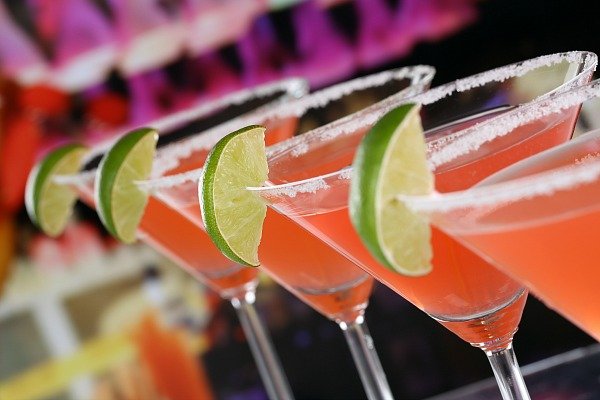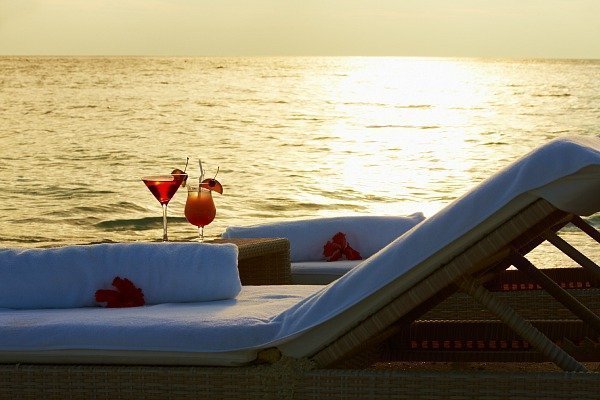
Apr 28, 2015 | Cocktails |
Cocktail Substitute Ingredients
As a superyacht stewardess, occasionally you will encounter a situation in which you do not have a particular spirit or you run out of the necessary ingredients that are required for a cocktail.
Here are some guidelines for acceptable substitution of ingredients:
Acceptable substitutions:
Gin = vodka
This is a tough one to pull off, but in general, if you are making martini-type drinks, gin can sometimes be substituted for vodka and vice versa. While these alcohols taste quite different, the texture and appearance of a cocktail are not altered by switching, and can often be just as good.
Rye = Bourbon/Blended whiskey
This is a guideline only. Whiskeys have distinct flavours, even whiskeys of the same grain. Experiment, but keep notes about what works and what doesn’t – especially if you have whiskey-loving guests.
White Tequila = Gold Tequila
Many “tropical” drinks such as Margaritas do not actually rely on the subtle distinctions between tequilas, as much as advertising would have you believe.
Gold tequilas are generally slightly sweeter than clear tequilas, as they have caramel and flavour additives.
Rum = Tequila
Exotic drinks tend to rely on spirits brewed in equatorial lands. Rum drinks often work well with tequila substitutions and vice versa, especially white rum for white tequila or gold/light rum for gold tequila.
However, the flavour will not be the same, but it is likely the drink will still be good.
Schnapps = Liqueur
Depending on where you are in the world, there may not even be a distinction between schnapps and liqueur.
Sweeter brands of schnapps are practically liqueurs and may be substituted freely. Be careful of dry schnapps, which can be closer to a vodka.
Unacceptable substitutions:
Tonic Water = Carbonated Water (Club Soda)
These are not the same. Tonic water is flavoured with quinine, which is the base for making bitters. Carbonated water (a.k.a. soda or seltzer) just has dissolved carbon gases for bubbles.
Scotch Whiskey = Any other Whiskey (19)
Related articles

Feb 7, 2015 | Cocktails |
‘Live in the sunshine, swim the sea, drink the wild air”
– Ralph Waldo Emerson
Spirits Glossary.
A glossary is simply an alphabetical list of words relating to a specific subject, text, or dialect, with explanations. As a super yacht stewardess you will be required to know a great deal of jargon related to spirits, liqueurs, wines and beers.
So next time the chief stewardess asks you to get the Armagnac, Lillet, Frangelico or the jigger, you will know exactly what to look for.
Below is a basic glossary of popular spirits and liqueurs, keep checking back as I will be adding to this list in the future.
Amaretto:
An Almond flavoured Italian Liqueur.
Angostura Bitters:
Is a rum based liqueur made from herbs and spices.
Anisette:
Is a sweet liquorice liqueur.
Aperitif:
Is a before-dinner drink that stimulates the appetite.
Applejack:
A brandy distilled from hard fermented apples.
Aquavit:
A Scandinavian liquor made from potatoes
Armagnac:
A French Cognac
Bacardi:
A light rum distilled from molasses or sugar cane
Bailey’s Irish Cream:
A blend of whiskey, cream, sugar & cocoa.
Benedictine:
A sweet cognac based liqueur
Bitters:
Is a spirit produced from herbs, roots and plants.
Blue Curaçao:
A sweet blue liqueur made from the dried peel of bitter oranges.
Bourbon:
An American whiskey made from corn, rye wheat, malted barley or malted rye grain.
Brandy:
A liquor distilled from fermented fruit juice.
Calvados:
An apple brandy.
Campari:
A bitter Italian aperitif
Capuli:
Similar to a European cherry.
Cassis:
Blackberry Liqueur from Fance.
Celery Salt:
A blend of celery seed & Salt.
Champagne:
A sparkling wine from the Champagne region in France
Cider:
An apple flavoured sparkling drink made from fermented apples.
Cognac:
A French brandy, distilled from white wine.
Cointreau:
A clear brandy liqueur made from the peel of oranges.
Cream of coconut:
A sweet thick liquid made from fresh coconut, sugar and stabilizers.
Crème’ de cacao:
A sweet coffee and vanilla flavoured liqueur.
Crème ’de menthe:
A sweet peppermint flavoured liqueur.
Curacao:
An orange flavoured liqueur.
Eau de vie:
A French young Brandy.
Egg nog:
Cocktails that use raw egg.
Everclear:
A 95% pure grain alcohol.
Heavy Cream:
A type of cream which is high in butterfat.
High Ball:
Is a tall glass used to serve long drinks in.
Fernet Branca:
A bitter Italian Liquor made from macerating over 40 herbs.
Framboise:
Raspberry champagne like drink.
Frappe’:
A drink served with blended Ice.
Galliano:
A sweet Italian liqueur, made from anise, herbs & vanilla.
Gin:
A clear spirit made distilled from corn, barley & rye.
Ginger Ale:
A carbonated soft drink.
Grand Mariner:
An Orange flavoured liqueur made from blended cognac, orange peels & vanilla.
Grappa:
Is a pomace wine. Made with left over material, such as grapes stems, seeds, & skin. It is very strong.
Grenadine:
A strong red syrup made from pomegranates and red currants.
Guarana’:
Is a tropical plant from Venezuela & Brazil.
Half & Half:
A mixture of half cream & half milk.
Kahlua:
A rich dark brown coffee liqueur.
Kirschwasser:
A cherry flavoured liqueur distilled from cherries.
Kummel:
A colourless liqueur made from caraway seed, fennel and cumin.
La Ina Sherry:
A light fino sherry
Lager:
A drink made by the slow fermentation of yeast at a low temperature.
Lillet:
A type of wine from the Bordeaux region, France drunk as an aperitif.
Limoncello. Lemoncello:
Is a popular Italian lemon liqueur.
Mad Dog:
Is a fortified wine.
Mandarine Napoleon:
Is a Belgian orange flavoured liqueur.
Maraschino:
Italian cherry liqueur
Madeira:
Is a Portuguese superior sherry
Malibu:
Is a popular coconut flavoured rum.
Maraschino Cherry:
Is a sugar syrup coated cherry.
Mari Mayans Absinthe:
Is a strong absinthe
Midori:
Is a Japanese melon liqueur.
Noilly Prat:
Is a brand of vermouth from France.
Nutmeg:
Is a strong traditional spice, from the Myristica tree.
Passoa:
A red liqueur made from passion fruit juice and citrus.
Pastis:
Is an anise-flavoured liqueur and aperitif from France.
Pepper:
A spice from the pepper plant
Pernod:
A liquorice flavoured liqueur.
Pimento:
Is a sweet spicy herbal liqueur.
Port:
Is a fortified wine, there are many flavours and ages available.
Prosecco:
Is an Italian sparkling wine.
Punch:
Assorted drinks, usually containing fruit juice.
Pusser’s rum:
Is a blend of rum made out of the world’s finest rums.
Quinquina:
Is a French aperitif.
Raki Liqueur:
Is a strong Turkish Liqueur made from anise and raisins.
Rum:
Is a golden or dark distilled liquor made from sugar cane or molasses.
Rumple Minze:
A strong peppermint- flavoured German schnapps
Rye Whiskey:
A whiskey distilled from fermented Rye.
Schnapps:
Schnapps is a type of distilled spirit that is typically higher proof and less sweet than liqueurs and available in a variety of flavours.
Smash:
Smash: Smashes are drinks of mint, sugar, and a base spirit. A classic smash is similar to a julep, but simpler.
Tabasco:
Spicy American sauce, made from in vinegar soaked red Spanish peppers and other herbs.
Toddy:
A toddy is a hot-water based cocktail, usually spiced. The word originally comes from the sap of an Indian palm tree, which was fermented into an alcoholic beverage.
VS:
Indication of the age of Cognac, Armagnac and Calvados. This quality, more mainstream than the VSOP or the XO is most commonly used in cocktails.
Williams:
A type of pear, which is used in the wonderful tasting Poire Williams brandy.
Worcester sauce:
A powerful emulsion of extracts of meat, molasses, anchovies, garlic and spring onions. Used to enhance the taste in many cocktails.
Xeres or sherry:
From Spain originating wines, of which the fermentation is stopped by adding spirits. There are many kinds, from dry (fino, Amontillado, manzanila) too sweet (oloroso, amoroso)


Dec 19, 2014 | Cocktails |
Christmas Cocktail & Mocktails Ideas
Blend, shake, stir and infuse your favourite ingredients into creating the perfect cocktail, where there is no right or wrong, you are only limited by your imagination. Yes, it’s that time of year again and this article is a follow on from the previous article” Christmas Table Setting Ideas”.
The History of Cocktails
The definition of cocktail appeared in the May 13, 1806, edition of The Balance and Columbian Repository, a publication in Hudson, New York, in which an answer was provided to the question:
“A Cocktail is a stimulating liquor composed of spirits of any kind, sugar, water, and bitters— it is vulgarly called ‘Bittered Sling’, and is supposed to be an excellent electioneering potion, in as much as it renders the heart stout and bold, at the same time that it fuddles the head.
It is said, also to be of great use to a democratic candidate: because a person, having swallowed a glass of it, is ready to swallow anything else.”(11)
The origins of the cocktail are a little unclear, as there is evidence of blending drinks back in the eighteenth century in London and around the same time in the United States. However, essentially the Americans embraced the cocktail culture shortly after the second World War and one would think of the cocktail is quintessentially an American concoction.
A cocktail is a drink that has two or more alcohol bases mixed, shaken or stirred with a non-alcohol base. This must not be confused with a mixed drink, which basically consists of one alcohol base and one non-alcoholic base poured over ice.
For the novice bar tender the idea of creating elaborate drinks can be a little daunting, however, if you follow the basic principles of cocktail making below you will be well on your cocktail creating way.
Taken from: Cocktails – Module Two of The Stewardess Bible
Top 10 Christmas Cocktails to Share with Your Guest
Key words:
Christmas Cocktail & Mocktails Ideas, Top 10 Christmas Cocktails to Share with Your Guest, Christmas Cocktails, Cocktails, Cocktail, Holiday Cocktails







